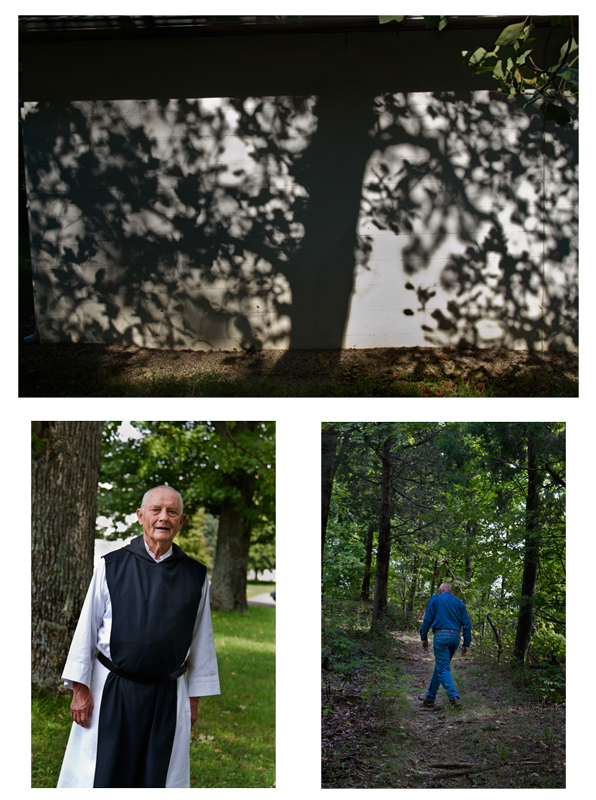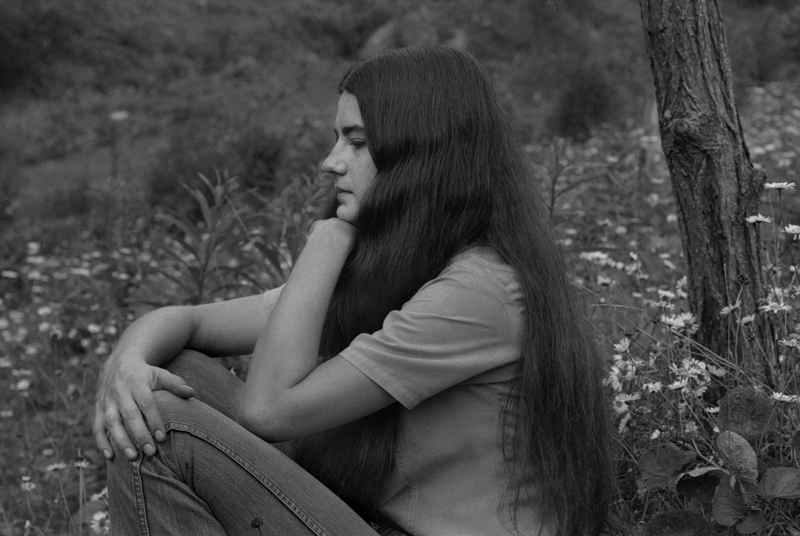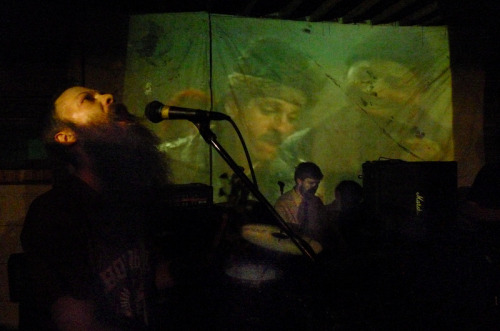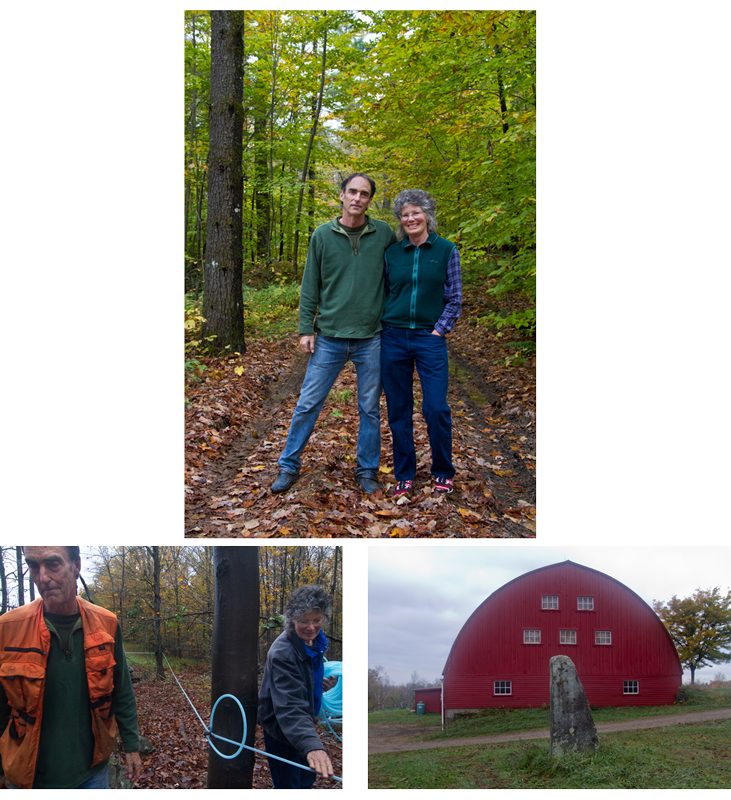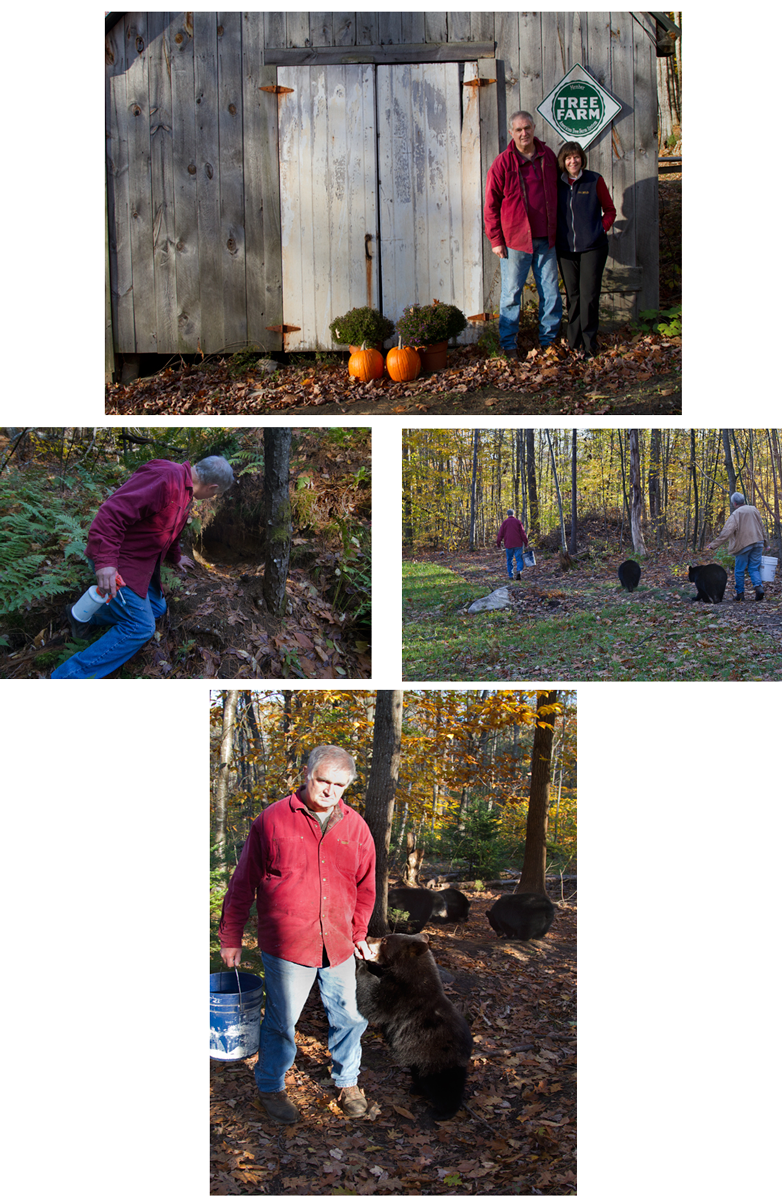Having a black bear rubbing against your chest is a hard act to follow, but after leaving Ben and Debbie Kilham, I drove on to western Massachusetts to meet with John Freeman and his sister Jane. They lived on an amazing piece of land, dotted and marked with artifacts and burial grounds from native and settler times. They took me to the original boundary marker that deeded their land to a distant ancestor from Native Americans in the late 16th century. Like many ancestral and historical forests, the Freeman’s land is surrounded by development and they’re under increasing pressure to sell the property because of high land values and corresponding high taxes. I don’t like the word “magical” so much, thinking it overused and easy. But I did, in fact, spend a magical day walking with them and their friends, Archie and Dave, through a primordial landscape in the misting rain.
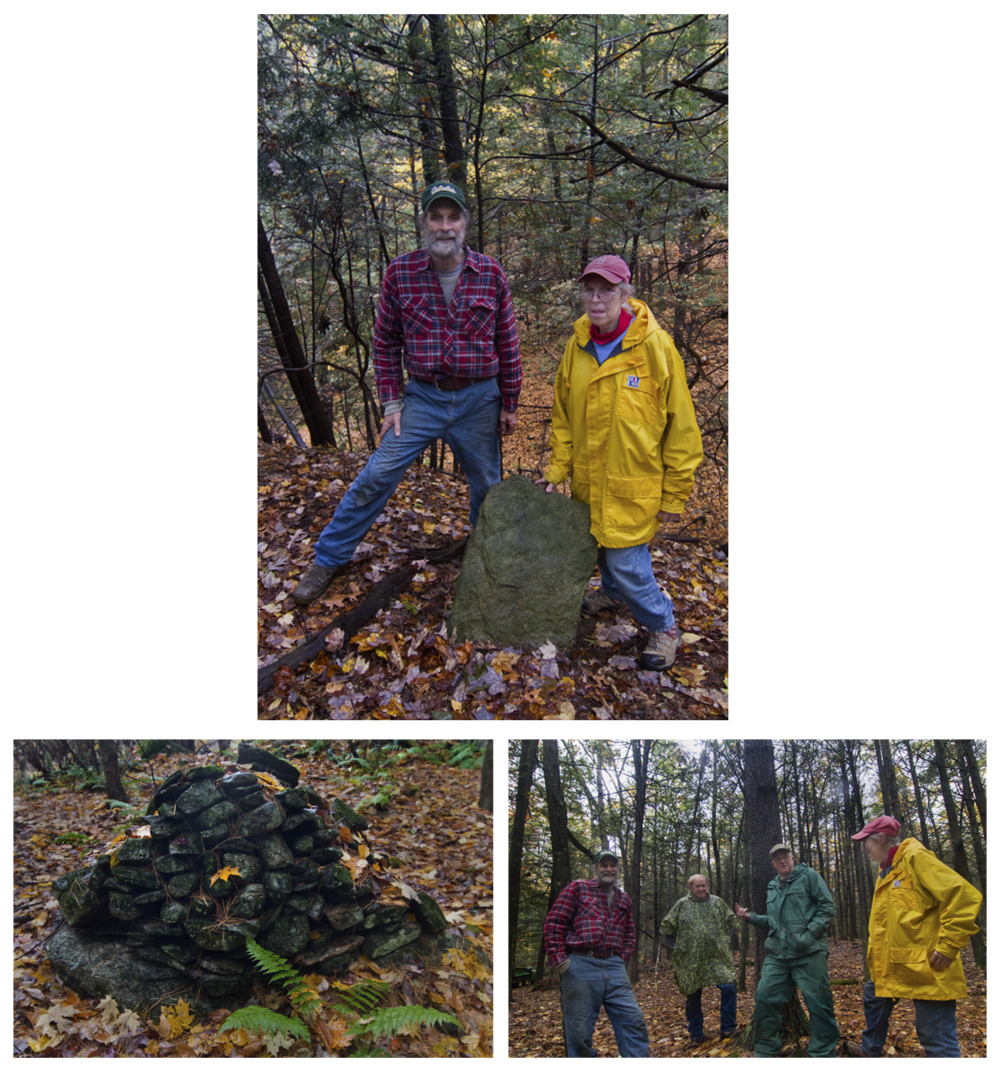
Top, John and Jane Freeman. Bottom, left, Native Donation Pile, right, John and Jane Freeman with Dave Beyor and Harrison Achilles.
I arrived home to an email from Apple notifying me of a potential hard drive crash and a need to immediately replace it. This is always disconcerting news if, as most photographers in the modern world do, you store your files digitally. That hard drive represents years of work. Thank you for back up – one of technology’s blessings. But my assistant, Jamie Paul, and I also faced production of a large number of prints for an exhibition at the Jameson Gallery at Duke at the end of November. The exhibit, titled Madison County Stories, presented new views of mountain life from myself, Duke University students, and Madison Middle School girls. The students had all participated in the Spring Creek Literacy Project; a summer program with the Duke students acting as mentors to the middle-schoolers in storytelling, writing, and photography. It was a big exhibit – 43 of my prints and 146 student pieces – and while my work was finished and ready to hang, the student work was still in the editing phase and had to be printed and put behind glass. But despite the loss of a week due to the computer repair, and some timely help from Kyndall and MaryRose, we got it finished and down to Durham on the Monday after Thanksgiving. It took us three and a half days to hang it, and the process was not without it’s own drama and intricate mathematical equations. The show looked wonderful and the opening was a big success and well attended. My friends Debbie Chandler and Denise O’Sullivan, who are Dellie’s grandchildren and noted ballad singers in their own right, sang and pretty much stole the show.
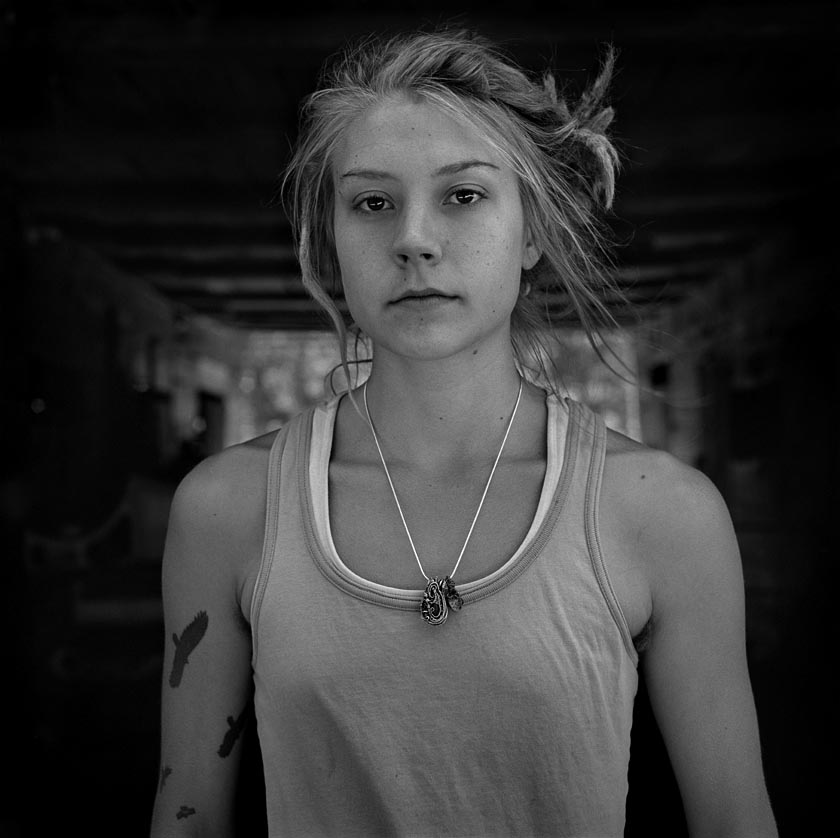
Kelsey, Paw Paw Creek, Madison County, NC, 2012, from Madison County Stories.

Top, Denise Norton O'Sullivan Singing in the Barn, Sodom Laurel, Madison County, NC, 1976, from SodomSong.
Bottom, Debbie Norton Chandler Dancing at the Eno River Festival, Durham, NC, 1976, from SodomSong.
I can’t say enough good things about Jamie Paul. In addition to the great work he's been doing with me for the last eighteen months, he's also found time to produce a CD of his music, Let It Mend, which will be available for purchase beginning February 5th at jamiepaulmusic.com.
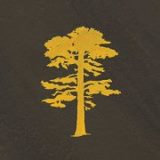
We decided on a quick turnaround and moved the show to Marshall for a January 18 opening reception at the Madison County Arts Council. Here, the exhibit presented different hanging challenges, and more limited space. Most importantly though, it offered the opportunity to present the work in the place it was created with the individual “artists” and their families in attendance. The reception was packed - teachers and administrators from the school system, politicians, and other members of the community, many of whom were in the photographs. It became more Homecoming than Art Exhibit, highlighted by the student's pride in seeing their work on the gallery walls.
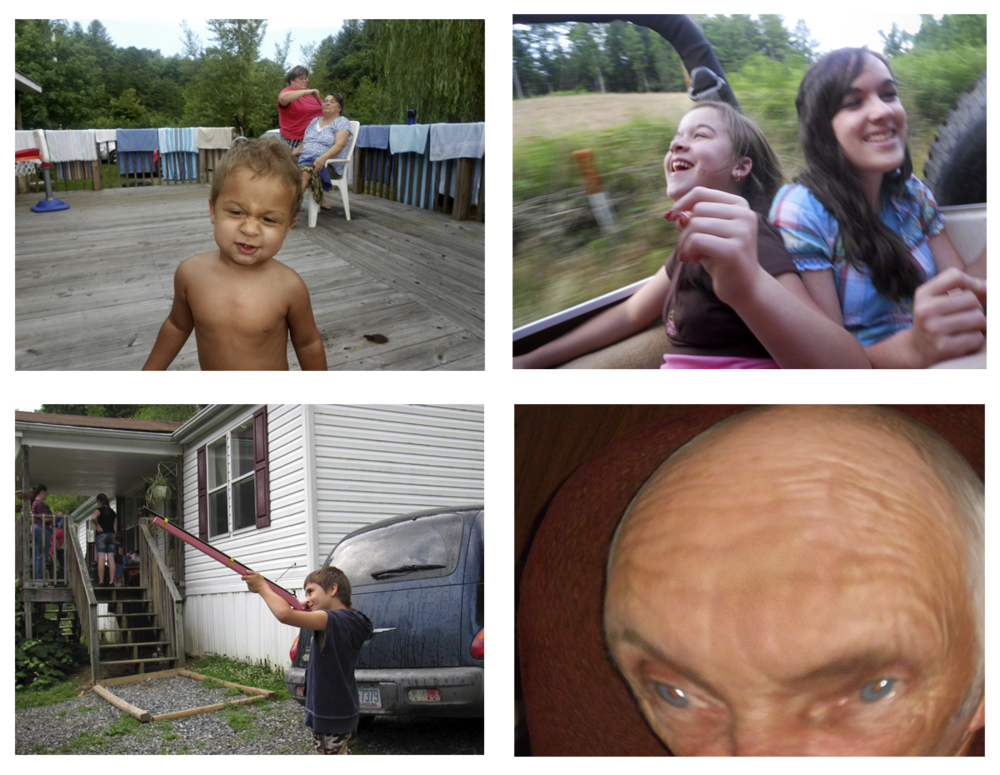
Top, left, Kristina Dixon, right, Cassidy Belcher. Bottom, left, Brittany Norton, right, Makalah Creaseman.
All students are from Madison County Middle School.
It’s good to have work. Assignments, lectures, exhibits, and grants pay bills and provide time to work on personal projects. I’m very fortunate to get to do what I do and I’m grateful for it. Additionally, my work often takes me out to the wider world, to places and with people I would not normally have the chance to see or meet. Throughout my career, photography has provided open windows to diverse, beautiful, inspiring places. I love that that is the case. These trips help me understand that people everywhere are much the same – kind, generous, and helpful – while also possessing strong differences of opinion, speech, and manner. We live on a wildly diverse planet in a wildly tumultuous time. It would seem that flexibility, tolerance, and an ability to adapt will play increasingly important roles in our lives.


